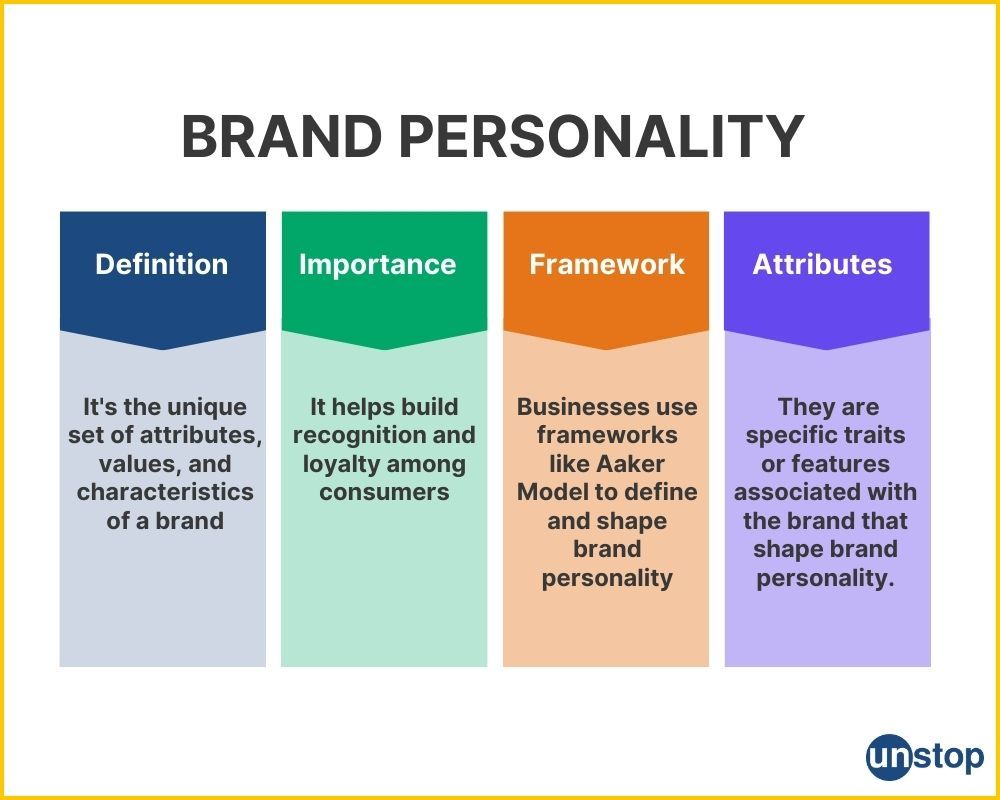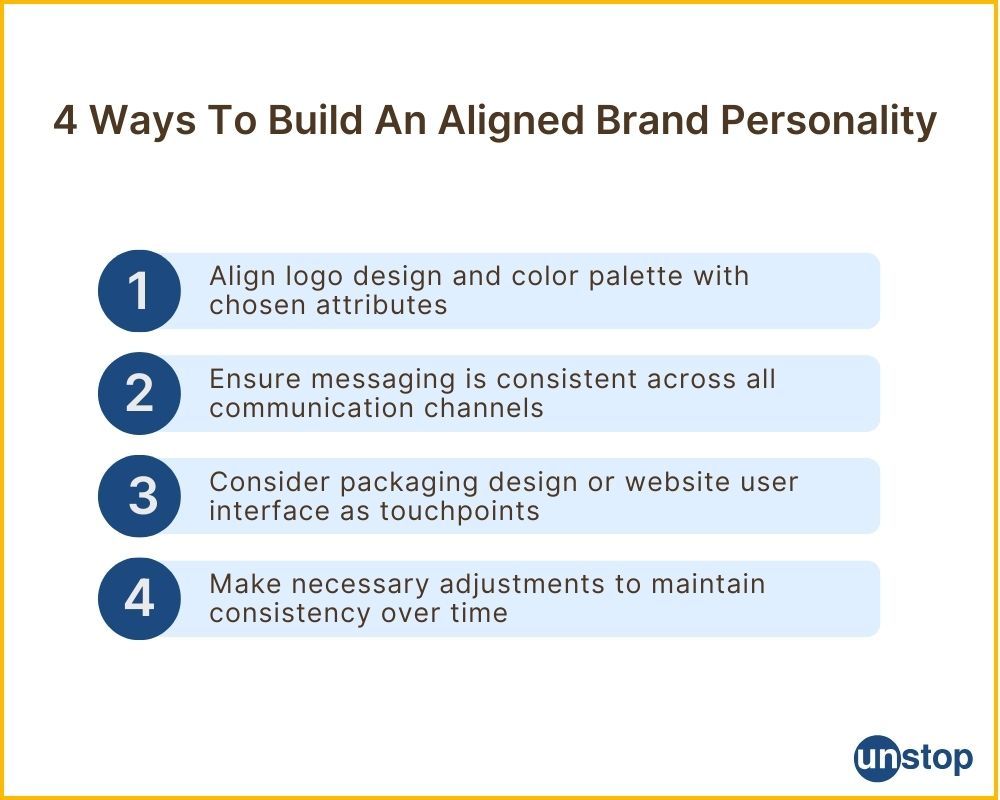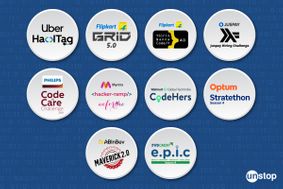Table of content:
- What is a Brand & Why is it Important?
- Elements of a Brand: Mission, Vision, and Values
- Types of Brands and their Significance
- Branding Strategies: Private, Multiproduct, and Mixed
- Brand Image and Its Impact on Perception
- Building a Strong Brand
- Frequently Asked Questions
Table of content:
- Understanding Brand Equity: Definition and Elements
- Importance of Brand Equity
- Evolution Of Brand Equity In The Digital Age
- Brand Equity in the Global Marketplace
- Measuring Brand Equity: Metrics & Methods
- Managing Brand Equity: Salient Elements
- Building & Managing Brand Equity: Best Practices
- The Future of Brand Equity
- Conclusion
- Frequently Asked Questions
Table of content:
- What is Brand Management?
- Importance of Brand Management
- Benefits of Effective Brand Management
- Principles of Brand Management
- Strategies for Successful Brand Management
- Brand Management vs. Marketing
- Conclusion: The Power of Brand Management
- Frequently Asked Questions
Table of content:
- Importance of Brand Image in Marketing
- Key Elements of a Successful Brand Image
- Brand Image vs. Brand Identity: Key Differences
- Measuring and Monitoring Brand Image
- Strategies for Maintaining and Enhancing Brand Image
- The Power of a Positive Brand Image
- FAQs
Table of content:
- What is Brand Awareness and its Importance?
- Benefits of Brand Awareness
- Brand Awareness Strategy: Some Tried & Tested Methods
- Some Creative Ways to Boost Brand Awareness
- Significance of Brand Awareness
- Conclusion
- Frequently Asked Questions
Table of content:
- Porter's 5 Forces Model: What Is It?
- Porter's 5 Forces Model: How To Use It?
- Common Barriers to Entry
- Evaluating Suppliers' Negotiating Power
- Understanding the Bargaining Power of Buyers
- Analyzing Threat of Substitute Products or Services
- Rivalry amongst Competitors (Old & New)
- Drawbacks of the Five Forces Model
- Conclusion
- Frequently Asked Questions
- How Well Do You Know Porter’s 5 Forces? Take A Quiz!
Table of content:
- What is Buying Motive?
- Types Of Buying Motives
- Importance Of Buying Motives
- Six Universal Buying Motives
- Identifying Buyer's Motives
- Utilizing Buying Motives In Sales
- Challenges In Interpreting Buying Motives
- Frequently Asked Questions (FAQs)
- 💸 Think You Know Buying Motives? Take A Quiz!
Table of content:
- Understanding the Elements and Importance of Brand Equity
- What are brand equity models?
- Comparing Keller's and Aaker's brand equity models
- Real-world examples of brand equity in action
- Strategies for building strong brand equity
- Key takeaways on brand equity models
- FAQs
- Mastered Brand Equity Models? Prove It!
Table of content:
- What Is Brand Positioning?
- The Importance of Brand Positioning for Businesses
- Creating A Brand Positioning Strategy: Step-By-Step Process
- Measuring the Success of Your Brand's Positioning
- Examples of Strong Brand Positioning in the Market
- Types of Brand Positioning Strategies
- Social Media Engagement: A Key Positioning Strategy
- What Makes a Good Brand Positioning Strategy?
- Conclusion
- Frequently Asked Questions
- Quick Quiz to Test Your Knowledge of Brand Positioning!
Table of content:
- Brand Personality: Definition & Importance
- How to Define Your Brand Personality?
- Choosing Your Brand Personality Attributes
- Dimensions of Brand Personality Framework: The Aaker Model
- Incorporating Core Values Into Your Brand Personality
- Examples of Brand Personalities in Action
- Conclusion
- Frequently Asked Questions
- Brand Personality Quiz– Let's Go!
Table of content:
- What is Brand Identity?
- What are the Key Components of Brand Identity?
- Importance & Benefits Of Brand Identity
- Importance of Unique Visual Elements in Brand Identity
- Communication Style and Tone of Voice in Brand Identity
- Steps on How to Create a Brand Identity
- Brand Identity Example- Coca-Cola
- Examples of Strong Brand Identities in Different Industries
- Consistency in Online and Offline Branding
- Conclusion
- Frequently Asked Questions (FAQs)
- Think You Know Brand Identity? Take A Quiz!
Table of content:
- Brand Identity Prism: Understanding The Concept
- Role Of Culture In Brand Identity Prism
- Brand Identity Prism: Visualizing The Sender & Receiver
- Benefits Of Brand Identity Prism
- Examples Of Brand Identity Prism In Action
- Brand Identity Prism: Key Takeaways
- Frequently Asked Questions
- Take This Brand Identity Prism Quiz!
Table of content:
- What is Market Segmentation?
- Importance of Market Segmentation
- The Market Segmentation Process
- Types of Market Segmentation
- Common Challenges in Implementing Market Segmentation
- Overcoming Challenges in Market Segmentation
- Conclusion: Understanding The Impact
- Frequently Asked Questions (FAQs)
- Test Your Market Segmentation Knowledge– Take This Quiz!
Table of content:
- What is Brand Loyalty? Meaning & Significance
- Characteristics of Brand Loyalty
- Measuring and Tracking Brand Loyalty
- Importance of Brand Loyalty for Companies
- Brand Loyalty Examples and Types
- Strategies for Building Brand Loyalty
- Differentiating Brand Loyalty from Customer Loyalty
- Conclusion: The Power and Importance of Brand Loyalty
- Frequently Asked Questions
- Think You Know Brand Loyalty? Take A Quiz!
Table of content:
- Brand Extension Meaning
- Brand Extension Types
- Understanding Brand Line Extension vs. Brand Extension
- The Impact and Potential of Brand Extension
- Successful and Unsuccessful Brand Extensions Examples
- Summing Up
- Frequently Asked Questions
- Quiz– Test Your Brand Extension!
Table of content:
- Step-by-step guide on how to build a brand from scratch
- Benefits of a Strong Brand
- Examining Successful Brand-Building Examples
- Summing up
- Frequently Asked Questions
- Know How to Build a Brand? Prove it With This Quiz!
Table of content:
- What is Marketing Mix?
- Understanding the 4 Ps of Marketing
- The Seven Ps of Marketing
- Implementing the Marketing Mix in Business
- Amul: Example of Successful Marketing Mix Implementation
- Exploring Alternative Marketing Mix Models
- Conclusion
- Frequently Asked Questions (FAQs)
- Mastered the Marketing Mix! Test Your Knowledge Now
Table of content:
- Defining Brand Value and its Importance
- Measuring Brand Value
- Factors that Make a Brand Valuable to Customers
- Examples of Brand Value from Real World
- Brand Value Versus Brand Equity
- The Impact of Brand Value on Business Marketing Strategies
- Conclusion: The Significance of Brand Value
- Frequently Asked Questions
- How Much Do You Know About Brand Value? Take This Quiz!
Table of content:
- Definition Of Co-Branding
- Different Types Of Co-Branding
- Benefits & Advantages Of Co-Branding
- Strategies For Successful Co-Branding Partnerships
- Notable Successful Co-Branding Examples
- Factors Influencing Co-Branding Success
- Frequently Asked Questions (FAQs)
- Co-Branding Quiz: Test Your Expertise!
Table of content:
- What is a Target Market?
- Importance of Target Market: Why Do We Need It?
- Types of Target Market
- The Target Marketing Process
- Primary Research for Target Markets
- Leveraging Target Market Segmentation for Sales
- Conclusion
- Frequently Asked Questions (FAQs)
- 🎯 Do You Know Your Target Market? Take the Quiz!
Table of content:
- Importance of Understanding Consumer Decisions
- Traditional vs Contemporary Consumer Behaviour Model
- Traditional Models of Consumer Behaviour
- Learning Model of Consumer Behaviour
- Psychoanalytical Model of Consumer Behaviour
- Sociological Model of Consumer Behaviour
- Economic Model of Consumer Behaviour
- Contemporary Models of Consumer Behaviour
- EKB Model of Consumer Behaviour
- Black Box Model of Consumer Behaviour (Stimulus-Response Consumer Behaviour Model)
- Howard Sheth Model of Consumer Behaviour
- Hawkins-Stern Model of Consumer Behavior
- Webster and Wind Model
- Nicosia Model of Consumer Behaviour
- How to Select a Consumer Behaviour Model?
- Final Remarks
- Frequently Asked Questions
- 🛍️ Consumer Behavior Models Quiz: Test Your Knowledge!
Table of content:
- What is a Consumer?: Definition & Role
- The Evolution of the Term "Consumer"
- Consumer Behavior
- Different Types of Consumers
- Consumers' Motivation for Buying
- Relationship Between Businesses and Consumers
- Consumer Rights in India
- Current Challenges for Consumers
- The Future of Consumers in a Digital Age
- Final Remarks
- Frequently Asked Questions (FAQs)
- 🛍️ Consumer or Customer? Test Your Knowledge!
Table of content:
- What is a Market Structure?
- Types of Market Structures
- How Markets Work
- Significance of Different Types of Market
- Summing Up
- Frequently Asked Questions
- 🏪 Market Structures 101: Take the Quiz!
Table of content:
- Understanding the Concept of Corporate Branding
- Importance and Advantages of Corporate Branding
- Researching Competitor Brands
- Implementing Effective Corporate Branding Strategies
- Successful Corporate Branding Examples: Alphabet, Walmart & SAP
- Impact and Success of Corporate Branding
- Conclusion
- Frequently Asked Questions
- 🏢 Corporate Branding Quiz: Test Your Knowledge!
Table of content:
- Perception Management: Meaning & Importance
- Process Of Perception Management
- Influencing & Shaping Perceptions
- Strategies For Perception Management
- Technology In Perception Management
- Branding & Control In Perception Management
- Customer Feedback For Perception Improvement
- Frequently Asked Questions (FAQs)
- 🧠 Perception Management Quiz: How Well Do You Know It?
Table of content:
- Definition & Importance Of Target Marketing
- Advantages & Disadvantages Of Target Marketing Strategies
- Examples Of Target Marketing Strategies
- Creating An Effective Target Market Strategy
- Segmentation: Key To Targeted Marketing
- Utilizing Social Media For Targeted Marketing
- Frequently Asked Questions ( FAQs)
- 🎯 Target Marketing Strategies Quiz: Test Your Knowledge!
Table of content:
- Definition and Significance of Brand Association
- Brand Association Types
- Successful Brand Association Examples
- Strategies for Building Strong Brand Associations
- Overcoming Negative Brand Associations
- Conclusion: Harnessing the Power of Brand Association
- Frequently Asked Questions
- 🔗 Brand Association Quiz: Check Your Brand Knowledge!
Table of content:
- What is Product Positioning?
- Importance Of Product Positioning in Marketing
- Difference between Product Positioning and Brand Positioning
- Types Of Product Positioning
- Main Components Of Product Positioning
- Successful Product Positioning Strategies
- Understanding the Product Positioning Process
- Examples Of Effective Product Positioning
- Conclusion
- Frequently Asked Questions (FAQs)
- 🔥 Product Positioning Quiz: Test Your Marketing Smarts!
Table of content:
- How do we define niche market?
- Strategies To Find Your Niche Market
- 7 Examples Of Niche Markets
- Benefits Of Targeting A Niche Market
- Testing Your Product Or Service For Niche Market
- Conclusion
- Niche Market: Frequently Asked Questions (FAQs)
- 🎯 Niche Market Quiz: Test Your Knowledge!
Table of content:
- Importance Of STP In Marketing
- Understanding STP in Marketing Step-by-Step
- Process Of Implementing STP In Marketing
- Examples Of Successful STP Strategies
- Conducting An STP Marketing Analysis
- Choosing Your Marketing Mix
- Strategies For Targeting the Right Audience
- Conclusion
- Frequently Asked Questions (FAQs)
- 🔍 STP in Marketing Quiz: Test Your Knowledge!
Table of content:
- What is Sales & Marketing?
- Sales Vs Marketing: Key Differences
- Fostering Synergy Between Sales & Marketing
- Sales vs Marketing: Managing Departmental Tensions
- Business Value Of Synergized Sales & Marketing
- Frequently Asked Questions (FAQs)
- 🚀 Sales & Marketing Quiz: Test Your Knowledge!
Table of content:
- Definition Of Customer Satisfaction
- Importance Of Customer Satisfaction
- Strategies For Effective Customer Satisfaction
- Measuring Customer Satisfaction
- Customer Satisfaction in Marketing & Sales
- Frequently Asked Questions (FAQs)
- 🎯 Customer Satisfaction Quiz: Are You an Expert?
Table of content:
- Customer Delight Meaning
- Benefits of Customer Delight
- Customer Satisfaction Vs Customer Delight
- Strategies With Customer Delight Examples
- How to Measuring the Impact Of Customer Delight?
- Customer Delight Examples - 3 instances by big brands that won hearts
- Common Mistakes In Customer Delight
- Conclusion
- Frequently Asked Questions (FAQs)
- 🌟 Customer Delight Quiz: Can You Ace It?
Table of content:
- What is a Marketing Plan?
- Types Of Marketing Plan
- What are the Key Components of a Marketing Plan?
- Steps for Effective Marketing Planning
- Crafting Your SEO Content Strategy
- Budgeting & Resource Allocation
- Identifying & Analyzing Competition
- Measuring Success with KPIs
- Importance of Flexibility in Marketing Planning
- Challenges of Marketing Plan
- Marketing Plan vs Business Plan
- Conclusion
- Frequently Asked Questions (FAQs)
- 📊 Marketing Planning Quiz: Test Your Knowledge!
Table of content:
- Marketing Control Definition
- Core Objectives Of Marketing Control
- Types Of Marketing Control
- Marketing Control Techniques & Processes
- Strategic & Profitability In Marketing Control
- Customer-Centric Measures In Marketing Control
- Frequently Asked Questions
- 📈 Marketing Control Quiz: Are You In Control?
Brand Personality: Definition, Significance, Strategy, Examples

Brand personality plays a crucial role in establishing a strong and memorable brand identity. It refers to the human-like characteristics and traits associated with a brand, enabling consumers to emotionally connect with it and differentiate it from competitors.
In this blog post, we will delve into the concept of brand personality, its importance in branding efforts, and how businesses can effectively develop and communicate their unique brand characteristics.
Brand Personality: Definition & Importance

Brand personality refers to the unique set of attributes, values, and characteristics that define how a brand presents itself to its target market. It goes beyond just the products or services offered by a brand and encompasses the overall persona that it portrays. Think of it as the brand's distinct voice, tone, and style that differentiate it from competitors in the market.
Attributes, Values, and Characteristics
A brand's personality is shaped by various attributes, values, and characteristics that are carefully crafted to resonate with its target audience. These elements contribute to creating a consistent image for the brand across different touchpoints.
- Attributes: These are specific traits or features associated with the brand. They can include qualities such as reliability, innovation, sophistication, or playfulness.
- Values: Brand values represent what the company stands for and believes in. These may include sustainability, inclusivity, social responsibility, or customer-centricity.
- Characteristics: The characteristics of a brand personality reflect its overall employer branding demeanor or behavior. It could be friendly, authoritative, adventurous, or nurturing.
Importance Of Defining Your Own Brand Personality
Shaping Consumer Perceptions
Brand personality is vital in shaping consumer perceptions and influencing their buying decisions. When consumers can relate to a brand on a personal level and perceive it as having desirable qualities aligned with their own values and aspirations, they are more likely to develop an emotional connection with that brand.
This emotional connection can lead to increased trust and loyalty towards the brand. Consumers feel like they know the brand on a deeper level and are more inclined to choose it over alternatives in their purchase decisions.
Building Trust and Loyalty
A strong brand personality fosters trust by consistently delivering on its promises and maintaining authenticity throughout all interactions with customers. When consumers feel that a brand is genuine in its communication and actions, they are more likely to view it as reliable. Loyalty follows trust when customers develop a strong emotional connection with a brand.
Establishing Your Unique Identity
Defining your own brand personality is indispensable in establishing your unique identity in a crowded market. In today's competitive landscape, it's not enough to just have a great product or service; you need to differentiate yourself from the competition. This is where brand personality and brand positioning come into play.
Enabling Consistent Experience
Another advantage of having a well-defined brand personality is that it enables you to create consistent experiences across touchpoints throughout the customer journey. From your website and social media presence to packaging and customer service interactions, every interaction should reflect and reinforce your brand's personality. Consistency creates trust and familiarity, making customers more likely to engage with and recommend your brand.
How to Define Your Brand Personality?

Aligning Visual Identity
- Align logo design and color palette with chosen attributes.
- Reinforce brand personality visually.
- Create a strong and consistent visual identity.
Consistency in Messaging
- Ensure messaging is consistent across all communication channels.
- Strengthen the connection between desired perception and consumer experience.
- Maintain alignment between chosen attributes and how customers perceive the brand.
Incorporating Attributes into Touchpoints
- Enhance the overall experience by incorporating chosen attributes.
- Consider packaging design or website user interface as touchpoints.
- Create a cohesive experience that aligns with the intended brand personality.
Regular Evaluation of Branding Elements
- Assess whether current branding elements accurately reflect the intended brand personality.
- Make necessary adjustments to maintain consistency over time.
- Stay authentic while adapting to evolving market dynamics.
Choosing Your Brand Personality Attributes
Defining your brand personality is a must in establishing a strong connection with your target audience. By identifying key attributes that align with their preferences, you can create a brand that resonates with them on a deeper level. So, how do you go about choosing the right brand personality attributes? Let's dive in and find out!
Consider Your Target Audience
When selecting brand personality attributes, it's essential to consider your target audience's characteristics. Factors such as age, gender, lifestyle, values, and aspirations play a significant role in determining what attributes will resonate with them. For instance, if your target audience consists of young professionals who value innovation and adventure, you might choose attributes like bold, innovative, or adventurous to reflect their desires.
Stand Out from the Competition
In today's competitive market, it's crucial to differentiate yourself from competitors. Your chosen brand personality attributes should set you apart while still appealing to your target market. Take some time to research your competitors' branding strategies and identify any gaps or opportunities for differentiation. For example, if most of your competitors have a formal and serious tone, you could opt for a more casual and friendly attribute like approachable or down-to-earth.
To harness the power of brand personality successfully, businesses need to understand their target audience deeply. Creating buyer personas can help identify the specific traits and attributes that will resonate most strongly with customers. Once these traits are identified, they can be incorporated into all aspects of branding – from visual elements like logos and color schemes to messaging tone in advertisement campaigns.
Ensure Consistency
Consistency is key. The attributes you choose for your brand personality should align seamlessly with other elements of your branding strategy. From your logo design to the tone of voice used in marketing materials, everything should work together cohesively. This consistency helps build trust and recognition among consumers.
To ensure consistency, use the same language and tone across all communication channels. Align visual elements such as colors and typography with your chosen attributes. Train employees on embodying the brand personality in customer interactions. By maintaining consistency throughout all touchpoints, you reinforce the desired perception of your brand.
Dimensions of Brand Personality Framework: The Aaker Model
The brand personality framework is a powerful tool that helps businesses define and shape their desired brand image. By aligning specific attributes with consumer perceptions, this framework provides a structured approach to creating consistent messaging and visual elements that reflect the brand's personality.
The brand personality framework serves as a guiding light for businesses, helping them develop effective marketing strategies, communication styles, and customer interactions that reinforce the desired brand perception. It acts as a blueprint for building a strong and cohesive brand identity.
The Aaker Model is a framework used to assess brand personalities. It identifies five dimensions that help us understand how consumers perceive and connect with brands. These dimensions are:
Sincerity, Excitement, Competence, Sophistication, and Ruggedness.
- Sincerity: Sincerity is all about brands that are seen as honest, genuine, and caring. These brands prioritize building trust and maintaining strong relationships with their customers. They are often associated with values like transparency and authenticity.
- Excitement: Excitement represents brands that are associated with thrill-seeking experiences. These brands aim to create a sense of adventure and excitement for their customers. They often use bold visuals, innovative marketing campaigns, and unique product offerings to stand out from the competition.
- Competence: Competence represents brands that are perceived as reliable experts in their field. These brands have a strong reputation for delivering high-quality products or services consistently. They are known for their expertise and knowledge in solving customer problems or meeting their needs.
- Sophistication: Sophistication is all about elegance, prestige, and refinement. Brands associated with sophistication often target consumers who appreciate luxury or high-end experiences. They focus on aesthetics, craftsmanship, and attention to detail in their products or services.
- Ruggedness: Ruggedness represents brands that are seen as tough, outdoorsy, and adventurous. These brands appeal to individuals who enjoy outdoor activities or seek rugged experiences in life. They emphasize durability, strength, and resilience in their products or services while promoting an adventurous lifestyle.
Incorporating Core Values Into Your Brand Personality
Incorporating core values into your brand personality is essential for establishing a strong and authentic identity. By aligning your core values with the attributes you choose to showcase, you can create a genuine connection with your target audience. This helps build trust among customers who share similar beliefs or ideals.
Defining Core Values
Core values serve as the guiding principles that drive your organization's mission and vision. They reflect the fundamental beliefs and ethics that shape your company's culture and behavior. Defining these core values is crucial in developing a brand personality that resonates with both internal stakeholders and external customers.
Authenticity Through Alignment
Aligning your chosen attributes with your core values ensures authenticity in how you communicate and interact with your audience. When there is coherence between what you claim to stand for and how you actually behave, it builds credibility and fosters trust among consumers.
Building Trust Through Shared Beliefs
Incorporating core values into your brand personality helps attract customers who share similar beliefs or ideals. When individuals resonate with a brand's core values, they are more likely to develop an emotional connection and become loyal advocates.
Examples of Brand Personalities in Action
- Apple, known for its innovative and sleek products, has a brand personality that exudes creativity, simplicity, and cutting-edge technology. From their iconic iPhone to their user-friendly software, Apple has successfully crafted a brand personality that resonates with consumers who value innovation and design. Their advertisements often showcase sleek visuals and emphasize the ease of use, appealing to individuals who seek simplicity in their tech devices.
- Nike's brand personality is deeply rooted in empowerment, determination, and athleticism. Through their powerful slogans like "Just Do It," Nike inspires individuals to push beyond their limits and embrace the athlete within them. Their advertisements often feature renowned athletes showcasing their dedication and hard work. By aligning themselves with top athletes across various sports disciplines, Nike reinforces its association with excellence and motivates consumers to strive for greatness.
- Harley-Davidson is synonymous with freedom, rebellion, and adventure. This motorcycle manufacturer has cultivated a distinct brand personality that appeals to those seeking an escape from the ordinary. Harley-Davidson's marketing campaigns often depict open roads, rugged landscapes, and riders embracing the spirit of freedom on two wheels. By tapping into the desire for adventure and individuality, Harley-Davidson has built a loyal community around its brand.
- Chanel is renowned for its elegant fashion designs but also boasts a unique brand personality characterized by sophistication, luxury, and timeless style. From haute couture runway shows to carefully curated advertising campaigns featuring iconic celebrities, Chanel consistently presents itself as a symbol of refined taste and exclusivity.
Conclusion
As you continue to develop your brand's personality, remember that it is not just about aesthetics or marketing tactics. It is about creating a connection that involves using your emotional intelligence with your audience. Your brand's personality should resonate with your target market and differentiate you from competitors. By incorporating core values, staying true to your identity, and consistently delivering on your promises, you can harness the power of brand personality to build trust, loyalty, and long-term success.
Frequently Asked Questions
Q1. How does having a defined brand personality impact customer perception?
Having a defined brand personality greatly influences customer perception as it helps create an emotional connection between customers and the brand. When customers can relate to a specific set of attributes or characteristics associated with a company's persona, they are more likely to form positive opinions about the business. This emotional bond enhances customer loyalty and advocacy.
Q2. Can I change my brand's personality over time?
While it is possible to evolve or refine your brand's personality over time, drastic changes may confuse or alienate existing customers who have already formed perceptions based on your previous persona. It is important to carefully consider any changes in line with market research and customer feedback before implementing them gradually.
Q3. How can small businesses define their unique brand personality?
Small businesses can define their unique brand personality by understanding their target market and identifying the values, traits, and characteristics that resonate with their audience. Conducting market research, analyzing competitor branding strategies, and seeking customer feedback are valuable steps in defining a distinctive brand personality.
Q4. Is it necessary for every business to have a defined brand personality?
While not every business explicitly defines its brand personality, having a well-defined persona can greatly benefit any company. A clear brand personality helps differentiate the business from competitors, creates an emotional connection with customers, and guides consistent messaging across various marketing channels.
Q5. How long does it take to develop a strong brand personality?
Developing a strong brand personality is an ongoing process that requires time and effort. It involves careful analysis of your target market, competitor research, internal reflection on core values, and consistent implementation of your chosen attributes over an extended period. The timeline may vary depending on the complexity of your business and business mentoring assessment.
Brand Personality Quiz– Let's Go!
Suggested reads:
- What Are Brand Equity Models? Popular Models Explained & Compared
- Brand Positioning: A Step-by-Step Guide To Crafting The Perfect Strategy
- Brand Management: Definition, Strategies, Principles & Benefits Explained
- Brand Equity: Definition, Importance, Key Elements & Examples
- What Is A Brand?: Find Its Meaning, Types, Importance & More In This Detailed Guide
Alekhya Chakrabarty is a father, a doodler, a trivia buff, a sports fanatic and a lifelong student of marketing. Alekhya is the VP of Marketing & Growth at Unstop, the engagement and hiring platform which connects students and graduates with opportunities. He has over a decade and a half of experience in driving revenue and building brands with the likes of Nestle, HUL and ITC. He is an alumnus of IMT Ghaziabad and in his last stint he was leading the marketing function at Sunstone, a higher education startup. Alekhya has been recognised as a ‘Top Voice’ on LinkedIn for Digital Marketing & Brand Management. He runs a marketing podcast titled East India Marketing Company to drive conversations around growth, content, culture and commerce.
Comments
Add commentLogin to continue reading
And access exclusive content, personalized recommendations, and career-boosting opportunities.










Yuvraj Vibhute 1 month ago
Vangala phani venkata Sri vaishnavi 1 month ago
Priyanshu Shaw 1 month ago
Aditya Gupta 1 month ago
Smritirekha Kar 1 month ago
Elizabeth jos 1 month ago